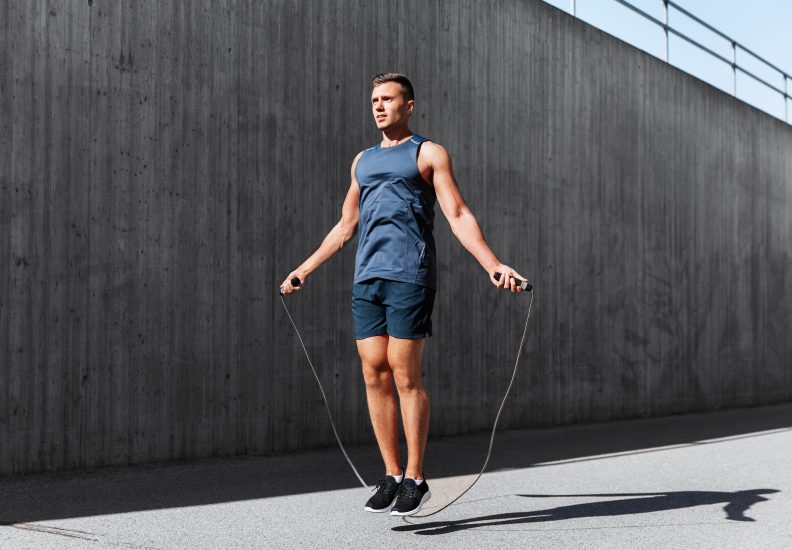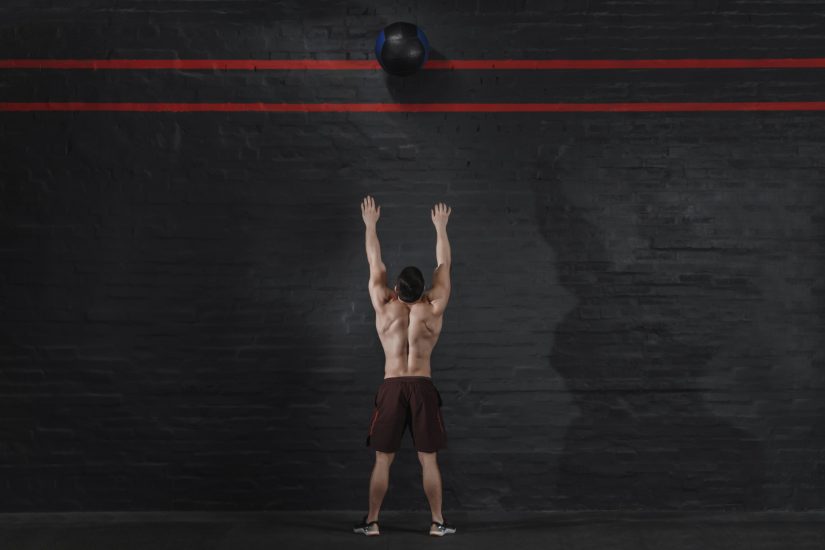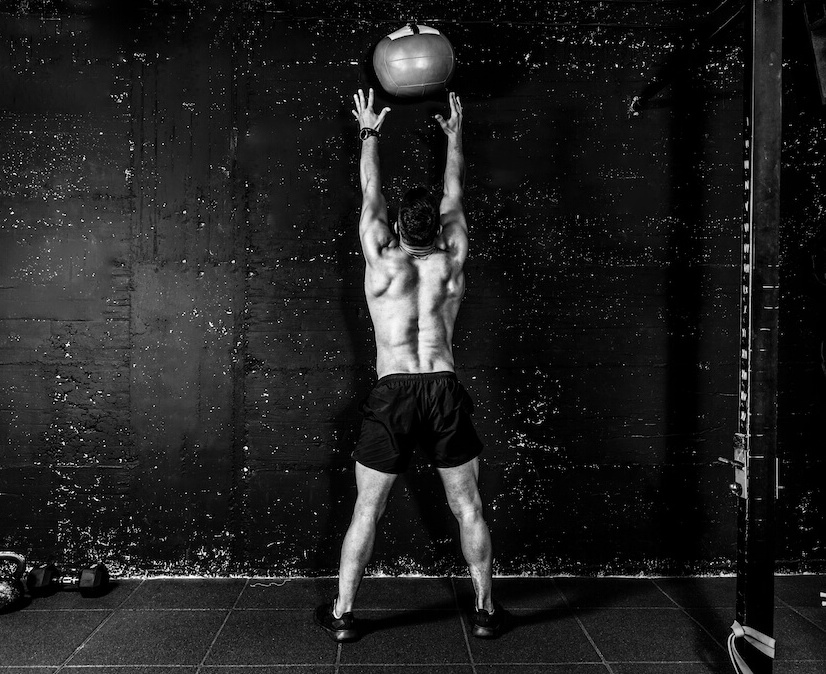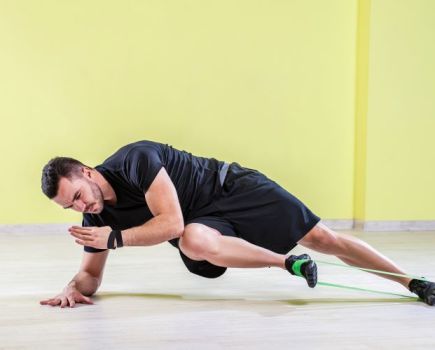Are you confused by CrossFit acronyms? Don’t know your WB from your WOD? Here are the most useful CrossFit terms explained…
The CrossFit brand and workout format has grown steadily since its conception in 2001, with more than 10 million regular participants globally. And the annual CrossFit Games allow participants to battle it out to gain the title of the ‘Fittest on Earth’.
But if you’re new to CrossFit, you’ll need to be prepared for the numerous acronyms and abbreviations it uses. The workout board will be packed with them because they encourage you to move faster, as instructors can give the workout details quicker.
Test your conditioning with this classic CrossFit WOD
What is CrossFit?
CrossFit describes its concept as ‘constantly varied functional movement at high intensity’ and combines fitness and sociability. If you dislike the isolation of working out alone at the gym but want to improve your strength, conditioning and cardio in the company of like-minded others, then CrossFit might be for you. The very essence of CrossFit is built on fitness camaraderie, achieving the best you can and encouraging others.
CrossFit workouts are designed to be full-body – reasonably short, but intense. The mix of exercises will build muscle mass and stamina, and the plyometric exercises, such as burpees or squat jumps, will increase flexibility, speed and improve strength. And there’s no chance of boredom when you’re faced with squats, lunges, cardio machines, kettlebells, medicine balls and even the odd tyre.
There are also mental health benefits to CrossFit. By joining a class, not only do you have the social side of working out and being motivated by others, but CrossFit encourages perseverance and a sense of belonging and community.
CrossFit terms explained
Some acronyms and abbreviations relate to general workout details, and others to specific exercises. Firstly, here are some of the terms you’ll need for any CrossFit routine:
AFAP: As fast as possible.
AHAP: As heavy as possible.
AMRAP: As many reps/rounds as possible.
- If your instructor tells you to do a round of 10 press-ups, 10 burpees and a 200-metre run in 4 minutes AMRAP, it means you need to do each of these in the order as many times as you can. AMRAPs encourage you to pace and push yourself and are suitable for any fitness level. They are excellent calorie burners, and you don’t have to use equipment.
EMOM: Every minute on the minute. It’s a simple way of completing a specific set of exercises and reps every minute on the minute. The time left over in the minute (if there is any!) is your rest time.
- The time spent doing the exercise is short but intense and allows rest. You can use EMOM to track your training performance and incorporate versatility and conditioning, and it’s brilliant for metcon (more CrossFit lingo, meaning metabolic conditioning).
OTG: Off the ground. This means using a barbell from the ground rather than from a rack.
WOD: Workout of the day. This refers to the routine you’ll do in your CrossFit class on a particular day. Instructors may select WOD based on class fitness or for individuals based on their fitness needs.
RX: This means ‘as prescribed’ and refers to the exact instructions given in, for example, a WOD by the instructor. Therefore, participants must follow the precise weight or height outlined.
Specific CrossFit exercise abbreviations
Here, CrossFit experts and devotees discuss some of the commonly used acronyms and abbreviations:
Khan Porter is one of the world’s top CrossFit athletes, seven-time CrossFit Games competitor, mental health advocate and podcast host, and has just competed at the Games as part of the CrossFit Reykjavik ‘Super Team’.
Max Heath is a martial artist and strength and conditioning coach at Lifeline Fitness.
Max Cooper has trained in CrossFit for more than three years. He has a background in weight training which helped him move into CrossFit.
FS: Front squat
A core CrossFit movement where the barbell should rest on the upper chest and shoulders.
Benefits of front squat: FS should improve posture, target the glutes and quads and strengthen the abs and core. Once you’ve mastered the technique, you can use it in other squat combinations. Experiment with foot positioning, as this will vary for individuals.
Front squat tips: “Let the knees track the toes and drive the elbows up throughout the movement to keep the bar sitting on the shoulders,” says Porter. “This is to be performed with a barbell, but if mobility doesn’t allow the correct positioning, sub for a goblet squat with a dumbbell or kettlebell instead.”
“Front squats are used in several other movements such as the squat clean, power clean and hang power clean,” adds Heath. “A good front squat rack position of holding the barbell on your front with a good high elbow position will help you in so many other movements in CrossFit.”
ATG squats: Ass to grass squat
A full squat where you bring your hips down to the ground as far as possible, as the name suggests.
Benefits of ass to grass squat: A whole-body exercise focusing primarily on your legs which is great for building stability and lower body strength.
ATG tips: Heath says if you’re using a bar, “Make sure it moves in a relatively straight line so when you’re at the top of the exercise (the concentric phase), you lower down, so your ass touches the grass. Then in the eccentric phase of the motion, push back up, drive the hips up and brace the core because if your core has no stability or structure, your squat will crumble.”
DL: Deadlift
This exercise uses all the core muscles in your legs to pull a barbell with weight on it from the floor.
Benefits of deadlifts: The mighty deadlift will strengthen your back and legs, improve your posture, burn calories, activate your core and increase your cardiovascular fitness.
Example routine: Cooper says, “One of my favourite deadlift workouts from the CrossFit 2022 Open is where every athlete has a 10-minute time cap for 1-2-3-4-5-6-7-8-9-10-9-8-7-6-5-4-3-2-1 reps for deadlifts and bar-facing burpees with a 225/155lb barbell.”

Double-unders or DUs are tricky to perform as the rope goes under you twice every jump | Shutterstock
DU: Double-under
Skipping where the rope goes under you twice every jump. “In the 2022 CrossFit Games,” says Cooper, “they introduced the crossover double-under. The rope and your hands cross your body whilst doing this movement. It was amazing to see even professional athletes struggle with them!”
Benefits of double-unders: DUs target most muscle groups and are excellent for quick calorie burning. “These are great for building power in your calves and legs as you need to jump high while quickly spinning the rope twice underneath you,” says Cooper.
Double-under tips: Stand with your feet just under shoulder-width apart and practise single jumps first, then speed up to pass the rope twice on each jump. Keep your elbows close to your body and tighten the glute and abs. Make sure the jumps are low.
HC or HSQ: Hang clean or hang squat clean
A hang clean pulls the weight (usually a barbell) from a standing hanging position (the starting position of the bar, which should be somewhere between your knee and hips) to the shoulders. You will incorporate a full squat to allow you to lift more weight.
C&J: Clean and jerk
A CrossFit staple, it’s a deadlift, a squat clean and a push press combined into one fluid movement.
Benefits of the clean and jerk: An explosive, total body workout that improves strength.
Clean and jerk tips: Heath says you should start with your chin tucked in, your core braced, and your back shouldn’t be too bent. “As soon as you get that initial push, bring your hips forward and roll the bar up in a nice straight line. The bar shouldn’t sway too far out from your body. And get your elbows up nice and high to start with.
“When you go for that initial split with the legs, it’s important to try and get underneath the bar, don’t move the bar over you. As long as you are underneath the bar, getting the stance shouldn’t be as much trouble. Lock your legs out, and fully complete the movement. Get the hips underneath and then push together.”
Example workout: To begin with, you might choose to use a barbell without added weights and practise doing 8 reps to perfect your form and technique. You can then advance to 3 sets of up to 15 repetitions.
SN/PSN: Snatch or power snatch
A full snatch moves a barbell from the floor to a standing position and is a challenging, yet essential CrossFit move to learn. “The snatch is the king of CrossFit moves. This is a baseline Olympic lifting move used heavily in CrossFit, whether a heavy snatch or a lighter power snatch in a workout. It takes real skill to master when you start,” says Cooper.
Snatch tips: Porter advises, “When snatching, a strong set-up before you begin your lift is important for a quality rep. For the power snatch, find your preferred snatch width grip on the bar, keep your arms loose but shoulders back and down so your lats are engaged and your chest over the bar. To start the lift, drive through your legs and keep your chest over the bar and bar close to you, only starting to pull aggressively when it reaches your hip crease. Try to perform the complex without dropping the bar if possible.”
Example workout: Porter suggests, “Build to a heavy power snatch and hang squat snatch for the day, then perform three sets at 90% of weight achieved.”
TGU: Turkish get-up
This is a technical and challenging move, not advised for CrossFit beginners. It should be a fluid movement starting on the floor (usually involving a weight), transitioning into a series of movements to standing and back.
Benefits of the Turkish get-up: A multifunctional exercise that enhances (and challenges) balance, flexibility, strength and coordination. It engages your core, strengthens arm muscles and shoulder joints and allows more joint flexibility.
Turkish get-up tip: Porter says, “Perform these with your weaker arm first with a kettlebell so that you can perform three quality reps on each side. The last rep of each set should be challenging, but you shouldn’t feel like you could fail the rep. Look up to the kettlebell throughout the movement to help you keep your balance and actively push up from your shoulder, keeping your elbow locked out at all times. Don’t rush the movement, as it is easy to lose balance. Engage your midline throughout to help create stability.”
RELATED: How to do the Turkish get-up
Example workout: Porter suggests 3 sets for quality; 3/3 Turkish get-ups; rest 2 mins between sets.

WBs or Wall balls use the full movement of the squat to propel a weighted ball up to 10ft in the air | Shutterstock
WB: Wall ball
“WBs are great for your engine as they use the full movement of the squat while exploding up to throw either a 13.2lb (6kg) or a 19.8lb (9kg) ball to a target above you,” says Cooper. “The height is normally 9ft (2.7m) for women and 10ft (3m) for men, but this can vary in gyms due to space.”
Benefits of wall balls: WBs are used in many WODs as they challenge strength and endurance and target many muscles in the legs and arms, the chest, glutes and lower back.
HSPU: Handstand press-up
Although these are fantastic for shoulder and core strength, they might not be something to try during your first CrossFit class.
Handstand press-up tip: Porter says, “When kipping, bring the knees down towards the stomach and drive your heels to the wall.”
Try this CrossFit workout
And finally, what workout could you have if you combined some of these acronyms? Porter suggests the following:
20 min EMOM
- Minute 1: 8 burpees + 8 sit-ups
- Minute 2: 12/9cal AB (air bike)
- Minute 3: 15 FS 40/30kg
- Minute 4: 10-15 HSPU








